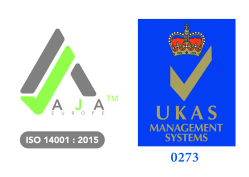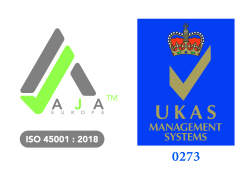Working with Abrasive Wheels
So, what is an Abrasive Wheel?
An Abrasive wheel consists of abrasive particles which are bonded together with various substances. It is considered a type of grinding tool that consists of bonded abrasive grains. It has been found that the most Common cause of a disk breaking is overheating and the breaking down of the bonding.

There are two different main types of bonding agent:
• Inorganic
• Organic
A rough estimate of how abrasive wheel machinery injuries occur:
Contact injuries 60%
Eye injuries 30%
Burst wheels 10%
Here are the common ways that people are injured from using Abrasive wheel machinery:
Using the wrong disc or wheel for the machinery available to them.
Using a cold wheel or disc.
Not using any suitable eye protection when performing tasks with abrasive wheels.
Improper use of tool rest systems implemented.
Vibration and/or excessive speed of machinery.
Failing to hold the workpiece correctly.
Not using blotters correctly and or using the wrong flanges.
Grinding below the wheel centre.
The functions of abrasive wheel components:
Flanges - The major stresses produced in an abrasive wheel under operating conditions tend to become greatest near the hole. It is therefore important that stresses due to mounting and driving are as far from the hole as practicable. This is done by recessing the side of the flange next to the wheel. In the case of straight adaptor and hubbed flanges there is an undercut in place of a recess. With certain exceptions, every abrasive wheel should be mounted between flanges that are at least one-third of the diameter of the wheel.
Blotters - Blotters are made from a compressible material, usually cardboard with a thickness of 0.2-1.0 mm as supplied by the wheel or machine manufacturer. Blotters should be used between the wheels and their flanges, except for the wheels mentioned previously. The main purpose of blotters is to distribute the clamping force of the flanges evenly on the wheel, but they also prevent slipping at lower clamping forces and reduce wear on flanges.
Wheel bushes - Bushes are inserts made of plastics or metal and used to reduce the hole size in an abrasive wheel so that it can be mounted correctly on a small diameter spindle. Bushes are hand-pressed into the hole of the wheel and are not recommended for use with wheels fitted to portable grinding machines. They should be slightly less than the width of the wheel and blotters. As the power required to drive a grinding wheel is transmitted to it through the flanges, care should be taken to ensure that the bearing area of the flanges is in contact with the wheel and not the bush.

Guards
Purpose of guards - In spite of the care exercised by abrasive wheel manufacturers in the design, manufacture and testing of wheels, the risk of a burst is inherent in every abrasive wheel and a guard of adequate strength must be provided to prevent injury from flying fragments. A guard has two main functions: firstly to contain the wheel parts in the event of a burst; and secondly to prevent, as far as possible, the operator from coming into contact with the wheel. A guard also has the secondary function of protecting the wheels against inadvertent damage and preventing an oversized wheel from being fitted.







